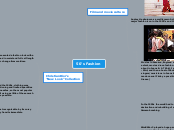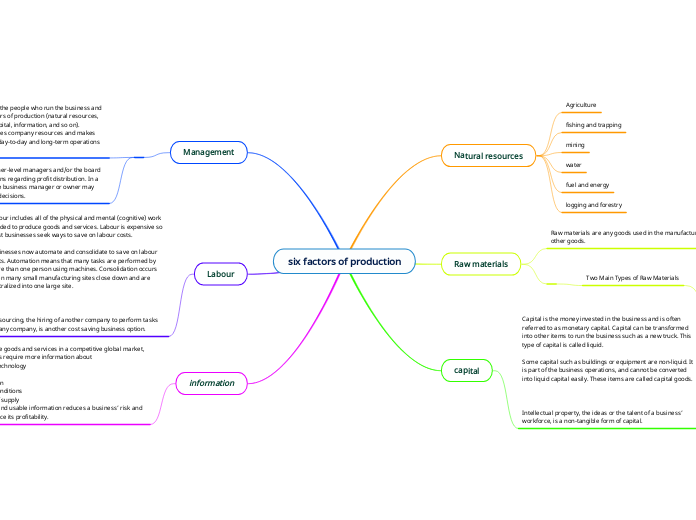Earth's Biomes
Tundra
Global warming has the ability to eliminate tundras forever. Melting of the permafrost by global warming, ozone depletion meaning ultra violet rays can harm the tundra, air pollution, oil spills, etc.
The natural resources include minerals, like gold, nickel, lead, oil and natural gas. This creates 1/10 of the world's oil and 1/4 of the world's natural gas.
The human population in the tundra is increasing every year due to the increase in jobs in mines and oil businesses. New towns and roads are built to support the grow in the tundra biome, however, this has in caused problems for animals migration and feeding patterns.
Abiotic features of the Tundra are winds, rainfall, short summer days, long cold winters, soil and permafrost.
The nomal winter temperature is -34 degrees Celsius while the normal summer temperature is 3-12 degrees.
There is low precipitation usually 38 cm yearly.
Permafrost is the frozen subsoil consisting of gravel and fine soil.
Abiotic features of the Tundra are winds, rainfall, short summer days, long cold winters, soil and permafrost.
The nomal winter temperature is -34 degrees Celsius while the normal summer temperature is 3-12 degrees.
There is low precipitation usually 38 cm yearly.
Permafrost is the frozen subsoil consisting of gravel and fine soil.
There are very little plants due to harsh environment however some have adapted to this.
Examples of Flora include Alpine moss, arctic grass, Antarctic pearlwort.
There are very little plants due to harsh environment however some have adapted to this.
Examples of Flora include Alpine moss, arctic grass, Antarctic pearlwort, reindeer mosses, sedges, shrubs etc.
Examples of Fauna include reindeer, polar bears, foxes, wolves, birds and rabbits, goats, caribou, marmots, elks, penguins etc.
The Tundra is located at the top of the Earth near the North pole as well as the south in Antarctica. This biome covers a 1/5 of the world's surface. This biome is found across northern Alaska, Canada and Siberia. It is known to have long cold winters and short cool summers. Dry winds and low precipitation throughout the year.
Desert
Global warming increases the chance of drought.
Higher temperatures can cause wildfires that affect other species.
Irrigation used for agriculture may lead to salt levels in the soil that is too high to support plants. Also pollution like nuclear waste being dumped since these biomes are used for testing grounds.
Global warming increases the chance of drought.
Higher temperatures can cause wildfires that affect other species.
Irrigation used for agriculture may lead to salt levels in the soil that is too high to support plants. Also pollution like nuclear waste being dumped since these biomes are used for testing grounds.
The natural resources of the desert are oil, natural gas and metals and minerals.
There are a lot of oil fields in the desert biomes which makes it very easy for others to exploit the resource.
Minerals like iron, gold, silver, lead-zinc ores etc are found in areas near the water table, which concentrates the minerals so ore can be mined.
The natural resources of the desert are oil, natural gas and metals and minerals.
There are a lot of oil fields in the desert biomes which makes it very easy for others to exploit the resource.
Minerals like iron, gold, silver, lead-zinc ores etc are found in areas near the water table, which concentrates the minerals so ore can be mined.
Deserts are actually one of the last areas of total wilderness. Only 1 6th of the world's population actually live in the desert areas. Humans have also impacted this biome in a negative way through pollution, drilling fossil fuels, etc.
This includes precipitation, water availability, sunlight, and temperature
For precipitation most deserts get 25 cm of rain a year. Plants grow from the water under the ground.
Temperatures very a lot during the day since there is no water to store heat from the day. Some days the temperature can reach 100 degrees fahrenheit but drop to 32 degrees at night.
For precipitation most deserts get 25 cm of rain a year. Plants grow from the water under the ground.
Temperatures very a lot during the day since there is no water to store heat from the day. Some days the temperature can reach 100 degrees fahrenheit but drop to 32 degrees at night.
This includes precipitation, water availability, sunlight, and temperature
For precipitation most deserts get 25 cm of rain a year. Plants grow from the water under the ground.
Temperatures very a lot during the day since there is no water to store heat from the day. Some days the temperature can reach 100 degrees fahrenheit but drop to 32 degrees at night.
There aren't many plants in the desert since they have to adapt to living in such a dry environment. Examples of Flora in the desert include Tumbleweed, Prickly Pear Cacti, Saguaro Cactus, Mexican Poppies, Weathered Trees, Wildflowers, Joshua tree, Brittle bush etc. Examples of Fauna include the African wild dog, bobcats, armadillo, coyote, desert tortoise, gazelles etc.
This biome covers 1/5 of the world's surface, some deserts are hot and some are cold. The largest desert in the world is actually Antarctica and the largest for the hot deserts in the Sahara. They can also be found in North America, southern Asia, South and central America, Ethiopia and Australia.
This biome covers 1/5 of the world's surface, some deserts are hot and some are cold. The largest desert in the world is actually Antarctica and the largest for the hot deserts in the Sahara. They can also be found in North America, southern Asia, South and central America, Ethiopia and Australia.
Savanna
The man ecological threats to the savanna are human activities, drought and heavy grazing, desertification, and carbon emissions.
Human activities like hunting as a sport, unsustainable water usage, over harvesting of plants etc. are causing negative impacts to the biome.
Drought and heavy grazing change the grasses in the area from being edible to inedible
Desertification is caused by climate change, farming, overgrazing, agriculture irrigation, deforestation and erosion.
Carbon emissions can cause an increase in the amount of trees and shrubs which would threaten the savanna since those plants need more water than grasses.
The man ecological threats to the savanna are human activities, drought and heavy grazing, desertification, and carbon emissions.
Human activities like hunting as a sport, unsustainable water usage, over harvesting of plants etc. are causing negative impacts to the biome.
Drought and heavy grazing change the grasses in the area from being edible to inedible
Desertification is caused by climate change, farming, overgrazing, agriculture irrigation, deforestation and erosion.
Carbon emissions can cause an increase in the amount of trees and shrubs which would threaten the savanna since those plants need more water than grasses.
The natural resources in the savanna are water, oil, livestock, wood, and a variety of metals.
Even though the savannas are typically very dry there are major rivers that flow for the people of the savanna to use and the animals as well.
The savanna have a lot of space for grazing herds of livestock for their meat and milk.
Trees in the savanna are used for building lumber or for fuel
There are a lot of areas where oil drilling is taking place.
Examples of metal resources are nickel, lead, zinc, gold, manganese, uranium etc.
The natural resources in the savanna are water, oil, livestock, wood, and a variety of metals.
Even though the savannas are typically very dry there are major rivers that flow for the people of the savanna to use and the animals as well.
The savanna have a lot of space for grazing herds of livestock for their meat and milk.
Trees in the savanna are used for building lumber or for fuel
There are a lot of areas where oil drilling is taking place.
Examples of metal resources are nickel, lead, zinc, gold, manganese, uranium etc.
The population of Human living in the savanna regions is very low, however as Humans continue to develop and expand the likelihood of the population increasing becomes more realistic as humans continue to alter it to better suit their needs. The tropical savannas are still home to aboriginal culture
Abiotic features of the savanna include rainfall, soil, and climate change.
The rainfall helps decide what category each savanna would fall into: wet, dry and thornbush. If there is a lot of rainfall than the savannas have a short dry season lasting 3-5 months. When there is less rain the dry season ranges from 5-7 months. When the rainfall becomes rare the thornbush savannas have dry seasons that are longer than 7 months.
The soil have low fertility. The most fertile soil is found underneath the scattered trees from the tree's fallen and decaying leaves.
Climate change is one of the more important features since the some savannas will expand or shrink due to increased CO2 in the atmosphere. This will have a significant impact on the animals, plants and insects that live in those areas.
Abiotic features of the savanna include rainfall, soil, and climate change.
The rainfall helps decide what category each savanna would fall into: wet, dry and thornbush. If there is a lot of rainfall than the savannas have a short dry season lasting 3-5 months. When there is less rain the dry season ranges from 5-7 months. When the rainfall becomes rare the thornbush savannas have dry seasons that are longer than 7 months.
The soil have low fertility. The most fertile soil is found underneath the scattered trees from the tree's fallen and decaying leaves.
Climate change is one of the more important features since the some savannas will expand or shrink due to increased CO2 in the atmosphere. This will have a significant impact on the animals, plants and insects that live in those areas.
The savanna have many different types of plants that are specialized to grow in that type of environment. The majority of the savanna is covered in grass and trees.
Examples of Flora include Rhodes grass, red oats grass, star grass, lemon grass, pine trees, palm trees and acacia trees.
Examples of Fauna in this biome include insects like grasshoppers, caterpillars, and large mammals like buffalo, zebra, hippos, rhinos, elephants etc.
The savanna have many different types of plants that are specialized to grow in that type of environment. The majority of the savanna is covered in grass and trees.
Examples of Flora include Rhodes grass, red oats grass, star grass, lemon grass, pine trees, palm trees and acacia trees.
Examples of Fauna in this biome include insects like grasshoppers, caterpillars, and large mammals like buffalo, zebra, hippos, rhinos, elephants etc.
The Savanna biome is an area that has a very dry season and then a very we season, They are situated between a grassland and a forest. They can overlap into other biomes. They are located in Africa, South America, India, and South- East Asia and Australia
Grassland
Threats include development of urban areas is increasing cutting into grassland habitat. Toxic pesticides to protect crop. Overgrazing as well. Global warming threatens grasslands due to change in rainfall patterns. Growing human populations, as the population increases the amount of space decreases leading to the destruction of a grassland.
Oil and gas are the main natural resources of this area. There are other resources like, soil, grains, coal, wheats.
There are other resources like, soil, grains, coal, wheats.
The rich soil is ideal for farming and grazing making it a perfect spot for farmers. Grasslands now supply corn, wheat and other grains, as well as grazing sheep and cattle.
About 800 million people live in the grasslands. In the Americas, the majority of the land has been turned in agricultural uses and urban uses Not a lot of people live in the Steppe climate.
The rich soil is ideal for farming and grazing making it a perfect spot for farmers. Grasslands now supply corn, wheat and other grains, as well as grazing sheep and cattle.
About 800 million people live in the grasslands. In the Americas, the majority of the land has been turned in agricultural uses and urban uses Not a lot of people live in the Steppe climate because of conditions
Abiotic features include temperature, humidity, topography, percipitation, sunlight, soil.
The temperature of the grasslands is very high near the Equator and mid to low near the subartic areas. Grasslands near the Equator are either tropical or temperate grasslands.
The precipitation determines the amount and types of plants and trees that grow.
Humidity is the percentage of moisture in the air. Tropical grasslands are very humid. Temperate grasslands are somewhat humid., but at times can be dry and have little moisture in the air.
Topography is the elevation and land features of the biome. Tropical grasslands are very unique some in areas of high elevation and some in low elevation.
The soil is fertile and nutrient rich and are able to support the grasses and wildflowers that grow out there.
Abiotic features include temperature, humidity, topography, percipitation, sunlight, soil.
The temperature of the grasslands is very high near the Equator and mid to low near the subartic areas. Grasslands near the Equator are either tropical or temperate grasslands.
The precipitation determines the amount and types of plants and trees that grow.
Humidity is the percentage of moisture in the air. Tropical grasslands are very humid. Temperate grasslands are somewhat humid., but at times can be dry and have little moisture in the air.
Topography is the elevation and land features of the biome. Tropical grasslands are very unique some in areas of high elevation and some in low elevation.
The soil is fertile and nutrient rich and are able to support the grasses and wildflowers that grow out there.
Grasses are the main type of plants in the grasslands. Trees and shrubs are rarely seen there. There are a lot of different species of grasses in this biome like purple needlegrass, wild oats, foxtain, ryegrass, and buffalo grass. Popular flowers that may be found growing on grasslands are asters, blazing stars, goldenrods, sunflowers, clovers, and wild indigos.
Examples of Fauna include gazelles, zebras, rhinos, wild horses, lions, wolves, prairie dogs, jack rabbits, deer, mice, coyotes, foxes, skunks, badgers, blackbirds, hawks, snakes, grasshoppers etc.
Grasses are the main type of plants in the grasslands. Trees and shrubs are rarely seen there. There are a lot of different species of grasses in this biome like purple needlegrass, wild oats, foxtain, ryegrass, and buffalo grass. Popular flowers that may be found growing on grasslands are asters, blazing stars, goldenrods, sunflowers, clovers, and wild indigos.
Examples of Fauna include gazelles, zebras, rhinos, wild horses, lions, wolves, prairie dogs, jack rabbits, deer, mice, coyotes, foxes, skunks, badgers, blackbirds, hawks, snakes, grasshoppers etc.
Chaparral or Mediterranean
This biome has been negatively affected by human development many natural resources like trees, grasses, brushes which are home to a lot of different species have been destroyed to accommodate growing human populations.
Water diversions and damming have caused the creation of many endangered species.
The resources of this biome include trees with oils for fire starters, trees for lumber.
This biome is home to large human populations. An example of this is California since it is apart of this biome. This is why we hear about a lot of fire incidents over on the west coast. There are two National Parks that help protect this biome. The Los Padres National Forest and the Channel Islands National Park.
This biome has been negatively affected by human development many natural resources like trees, grasses, brushes which are home to a lot of different species have been destroyed to accommodate growing human populations.
Water diversions and damming have caused the creation of many endangered species.
This biome is home to large human populations. An example of this is California since it is apart of this biome. This is why we hear about a lot of fire incidents over on the west coast. There are two National Parks that help protect this biome. The Los Padres National Forest and the Channel Islands National Park.
This biome has been negatively affected by human development many natural resources like trees, grasses, brushes which are home to a lot of different species have been destroyed to accommodate growing human populations.
Water diversions and damming have caused the creation of many endangered species.
The Abiotic Features of this biome include, soil, Humidity, altitude, wildfires, sunlight, rocks, mild winters.
The soil of the biome is very dry and dusty. the soil contains little nutrients. This makes it hard for vegetation to grow.
The humidity is very low but during the winter months in rises.
The Altitude ranges from sea levels up to altitudes of 1500 meters.
Wildfires occur often due to the biomes dry and moistureless nature of the environment.
The Abiotic Features of this biome include, soil, Humidity, altitude, wildfires, sunlight, rocks, mild winters.
The soil of the biome is very dry and dusty. the soil contains little nutrients. This makes it hard for vegetation to grow.
The humidity is very low but during the winter months in rises.
The Altitude ranges from sea levels up to altitudes of 1500 meters.
Wildfires occur often due to the biomes dry and moistureless nature of the environment.
Examples of Flora in the Chaparral or Mediterranean biome include the Blue oak, Manzanita, Coyote Brush, common sagebrush, Fairy Duster, French Broom and King Protea
Examples of Fauna include the Black-tailed Jack Rabbit, Grey Fox, Mountain Lion, Desert Fox, Spotted Skunk
Examples of Flora in the Chaparral or Mediterranean biome include the Blue oak, Manzanita, Coyote Brush, common sagebrush, Fairy Duster, French Broom and King Protea
Examples of Fauna include the Black-tailed Jack Rabbit, Grey Fox, Mountain Lion, Desert Fox, Spotted Skunk
-Small parts the biome is spread all across of the different continents and different types of terrain like mountains, rocky hills, flat plains and mountain slopes. This includes:
-US West Coast
-South America's West Coast
-South Africa's Cape Town
-Australia's Western tip
-Coast of the Mediterrananean
Warm temperature and dry
-Small parts the biome is spread all across of the different continents and different types of terrain like mountains, rocky hills, flat plains and mountain slopes. This includes:
-US West Coast
-South America's West Coast
-South Africa's Cape Town
-Australia's Western tip
-Coast of the Mediterrananean
Warm temperature and dry
Boreal or Taiga Forest
Threats include climate change, logging, mining, and oil and gas development. Even though the forest is still intact these threats are slowly destroying the biome.
The boreal forests natural resources are the trees for timber, and non timber products, mineral and energy resources and hydro electrical potential through rivers. Thye also provide food and renewable raw materials.
The natural resource that are in the this biome. The taiga contains
There are some cities that are situated in this biome like Murmansk, Arkhanglesk, Yakutsk, Anchorage, Yellowknife, Oulu etc.
Murmansk, Russia has a population of 307,257
Akhanglesk, Russia has a population of 348,783
Yakutsk, Russia has a population of 269,601
This shows that there are a lot of people living in this biome in the northern part of the world
There are some cities that are situated in this biome like Murmansk, Arkhanglesk, Yakutsk, Anchorage, Yellowknife, Oulu etc.
Murmansk, Russia has a population of 307,257
Akhanglesk, Russia has a population of 348,783
Yakutsk, Russia has a population of 269,601
Anchorage, Alaska has a population of 301, 826
Yellowknife, Canada has a population of 19,569
Oulu, Finland has a population of 201,124
This shows that there are a lot of people living in this biome in the northern part of the world
Characterisitcs
Abiotic Feautures
Examples of Abiotic features in the Boreal or Taiga forests are temperature, sunlight, precipitation, soil conditions. There are long, cold winters. Shot mid summers.
Examples of Flora in the Boreal or Taiga forest are the Balsam fir, Black Spruce, Douglas-fir, Eastern Red Ceda, Jack Pine, Paper Birch, Siberian Spruce, White Fir, White Poplar, and White Spruce. Examples of Fauna are the American Black Bear, the Bald Eagle, bobcat, Canadian Lynx, Gray wolf, Grizzly bear, long-eared owl, Red fox, River otter, snowshoe rabbit, and wolverines.
The Boreal or Taiga is home to the a number of plant and animals
Examples of Flora in the Boreal or Taiga forest are the Balsam fir, Black Spruce, Douglas-fir, Eastern Red Ceda, Jack Pine, Paper Birch, Siberian Spruce, White Fir, White Poplar, and White Spruce. Examples of Fauna are the American Black Bear, the Bald Eagle, bobcat, Canadian Lynx, Gray wolf, Grizzly bear, long-eared owl, Red fox, River otter, snowshoe rabbit, and wolverines.
Found in moist areas of the world
Found along belt between North America and Eurasia.
Canada and Russia are mostly covered by coniferous trees that make up the boreal or taiga forests.
- Found in moist areas of the world
- Found along belt between North America and Eurasia.
- Canada and Russia are mostly covered by coniferous trees that make up the boreal or taiga forests.
Temperate Deciduous Forest
Cutting down trees can have a negative impact on the ecosystem
Fire and pathogen threats effect all types of life in deciduous forests. Pathogens can kill some native species. Wildlife and human activities near forests can lead to a fire.
Climate change can affect the growth of these forests, more droughts which can affect the seasons to become longer, potential for wildfires increase if there is a drought
Deforestation and overgrazing are main ecological threats.
- Cutting down trees can have a negative impact on the ecosystem
- Fire and pathogen threats effect all types of life in deciduous forests. Pathogens can kill some native species. Wildlife and human activities near forests can lead to a fire.
- Climate change can affect the growth of these forests, more droughts which can affect the seasons to become longer, potential for wildfires increase if there is a drought
- Deforestation and overgrazing are main ecological threats.
Natural resources of Temperate Deciduous forests are trees, for their wood, plants, mostly for medical use and food, Fauna, some for their meat
Trees are coveted for use in furniture, boats etc. The types of trees found in these forests are oak, beech, maple, chestnut hickory, elm, basswood, sycamore, linden, walnut and birch
- Natural resources of Temperate Deciduous forests are trees, for their wood, plants, mostly for medical use and food, Fauna, some for their meat
- Trees are coveted for use in furniture, boats etc. The types of trees found in these forests are oak, beech, maple, chestnut hickory, elm, basswood, sycamore, linden, walnut and birch
A lot of the places that have a large human population were areas that once supported these forests however human development changed it to suit our needs.
Subtopic
Abiotic features of these forests include rocks, soil, water , sunlight, temperature change, hills, rain, climate etc.
- Abiotic features of these forests include rocks, soil, water , sunlight, temperature change, hills, rain, climate etc.
Found in areas with vary temperatures and seasonal changes, cool winters and warm moist summers
Located most commonly in the Northern Hemisphere, in eastern North America, East Asia and Europe. They are also found in smaller areas like south America
- Found in areas with vary temperatures and seasonal changes, cool winters and warm moist summers
- Located most commonly in the Northern Hemisphere, in eastern North America, East Asia and Europe. They are also found in smaller areas like south America
Rainforest
Ecological Threats
There is a destruction of rainforests caused by
the growth of population in countries with rainforests by cutting the forests to accommodate larger population
World's demand for wood provided by trees in the rain forest,
Cattle grazing by making herbivores eat plants
Mining
Multiple plantations
Dams
- Human destruction of rainforests
- the growth of population in countries with rainforests by cutting the forests to accommodate larger population
- World's demand for wood provided by trees in the rain forest,
- Cattle grazing by making herbivores eat plants
- Mining
- Multiple plantations
- Dams
Natural Resources
Responsible for a number of resources that we consume
Many fruits are grown in rainforests like avocado, Breadfruit, Cassava, guava
Plants that are grown in the rainforests are used to make medicine. An example of this is Catharanthus roseus aka Rosy periwinkle, it is used to treat leukemia.
Other resources for industrial use are found here too such as rubber, oils, gum, waxes, dyes etc.
- Responsible for a number of resources that we consume
- Many fruits are grown in rainforests like avocado, Breadfruit, Cassava, guava
- Plants that are grown in the rainforests are used to make medicine. An example of this is Catharanthus roseus aka Rosy periwinkle, it is used to treat leukemia.
- Other resources for industrial use are found here too such as rubber, oils, gum, waxes, dyes etc.
Human Population
Rainforests are home to a number of tribal groups. There are about 50 million people living there and they depend on the forest to survive.
The three most well known tribes are
The Pygmies
The Huli
The Yanomami
- Rainforests are home to a number of tribal groups. There are about 50 million people living there and they depend on the forest to survive.
- The three most well known tribes are
- The Pygmies
- The Huli
- The Yanomami
Characteristics
Abiotic Features
Abiotic features of rainforests include, water, rocks, soil, rain, high temperatures, sunlight, lightning etc.
- Abiotic features of rainforests include, water, rocks, soil, rain, high temperatures, sunlight, lightning etc.
Biotic Features
Rainforests are home to many living organisms. They include different plants, animals, fungi.
Examples of the Flora are orchids, bromeliads, moss, bamboo trees, rubber trees,and Epiphytes etc.
Examples of the Fauna are sloths, monkeys, insects, snakes, frogs, gorillas, Leopards, lemurs, anteaters etc.
- Rainforests are home to many living organisms. They include different plants, animals, fungi.
- Examples of the Flora are orchids, bromeliads, moss, bamboo trees, rubber trees,and Epiphytes etc.
- Examples of the Fauna are sloths, monkeys, insects, snakes, frogs, gorillas, Leopards, lemurs, anteaters etc.
Location
-Rain forests are found in hot and wet areas of the world
-They are usually found in South America. Lowland regions of Africa and Southeast Asia. Some are found in Central America and Australia as well.
Examples of Rain forests include: The Amazon Rainforest and the Congo Rainforest
- Rain forests are found in hot and wet areas of the world
- They are usually found in South America. Lowland regions of Africa and Southeast Asia. Some are found in Central America and Australia as well.
- Examples of Rain forests include: The Amazon Rainforest and the Congo Rainforest









